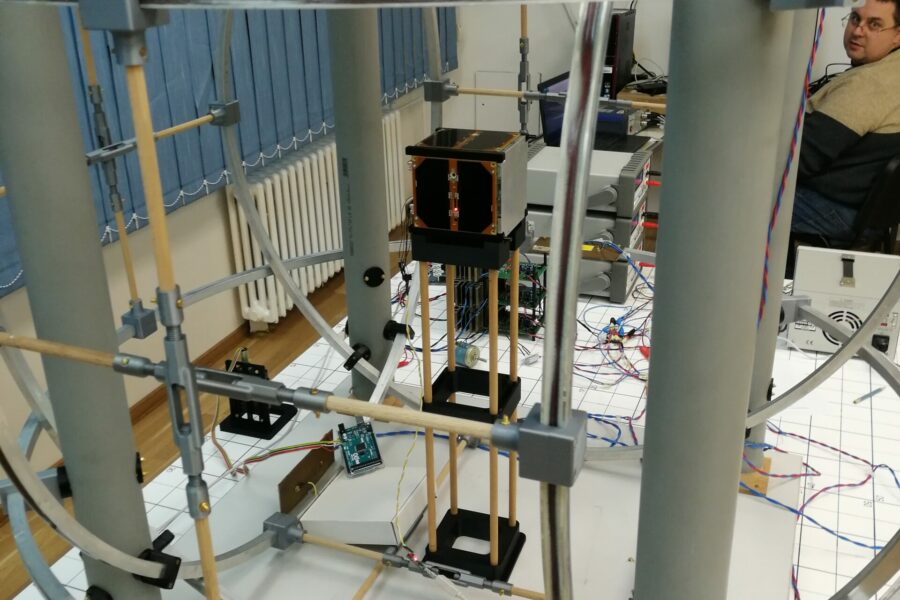Nanosatellites

Nanosatellites
In the recent years, the space exploration has passed a generational step represented by the mass utilization of the nanosatellites. Nowadays, the satellites weighing between one and twenty kilograms have been creating a new segment of the space exploration. Most of them are placed in the low orbits at the altitudes from 300 to 500 km. Magnetism is also used on their boards. It is a source of the information about the magnetic course for the calculation of the satellite’s position, and it is also a source of the torque for the stabilization of its rotation.
We materialized our many years of experience in the field of magnetism during the mission of the first Slovak skCUBE satellite and its successor GRBAlpha. We calibrated the on-board magnetometers of these satellites using the neural networks. We have been developing this unique solution for several years for the needs of the calibration of our VEMA magnetometers. Not only at the time of the development of the skCUBE, but also today, it is a unique solution for the calibration of the on-board magnetometers of the nanosatellites. We also participated in the development and production of the electromagnetic actuators of the skCUBE satellite. Actuators belong to the stabilization system of the satellite (ACS) and enable interaction between the satellite and the surrounding space. Their task is to “lean” on the Earth’s magnetic field and to create a torque that affects the rotation of the satellite. Our actuators placed on the skCUBE board successfully stopped the initial rotation of the satellite after it was placed in Earth orbit.
One of the goals of the EDIS company is to continue in the development of the electromagnetic actuators for the satellites, to offer our partners experience and help with the calibration of the on-board magnetometers, as well as to participate in the development of the special devices and sensors for the future space missions.